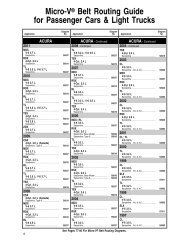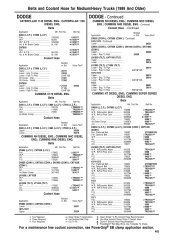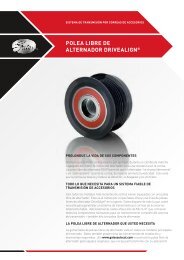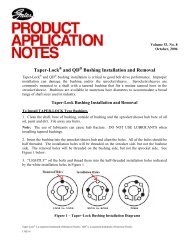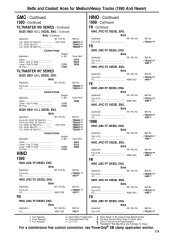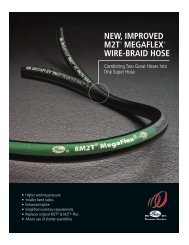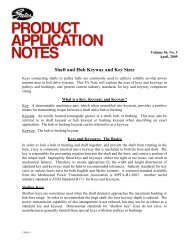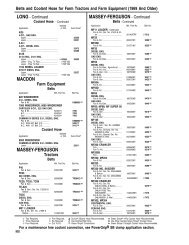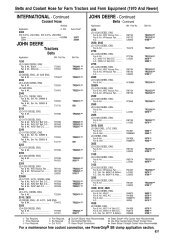PowerGrip® GT® Belt Drives
PowerGrip® GT® Belt Drives
PowerGrip® GT® Belt Drives
You also want an ePaper? Increase the reach of your titles
YUMPU automatically turns print PDFs into web optimized ePapers that Google loves.
Synchronous <strong>Belt</strong> <strong>Drives</strong> – Engineering<br />
III. <strong>Belt</strong> Tensioning — continued<br />
Shaft Separation: <strong>Belt</strong> installation tension can be<br />
applied directly by exerting a force against either the<br />
driveR or driveN shaft in a simple 2 point drive<br />
system (see Fig. 4). The resulting belt tension will<br />
be accurate as the force applied to the driveR or<br />
driveN shaft. This method is considerably easier to<br />
perform than the force/deflection method, and in<br />
some cases more accurate.<br />
Figure 4<br />
In order to calculate the required shaft separation<br />
force, the proper static tension (on a per span basis)<br />
should first be determined as previously discussed.<br />
This tension value will be present in both belt spans<br />
as tension is applied. The angle of the spans with<br />
respect to the movable shaft should then be<br />
determined. The belt spans should be considered<br />
to be vectors (force with direction), and be summed<br />
into a single tension vector force (see Fig. 5). Refer<br />
to section VI. <strong>Belt</strong> Pull on pages 54 and 55 for<br />
further instructions on summing vectors. Contact<br />
Application Engineering for assistance if needed.<br />
Idler Force: <strong>Belt</strong> installation tension can also be<br />
applied by exerting a force against an idler sprocket<br />
within the system that is used to take up belt slack<br />
(see Fig. 6). This force can be applied manually, or<br />
with a spring. Either way, the idler should be locked<br />
down after the appropriate tension has been applied.<br />
Figure 6<br />
Calculating the required force will involve a vector<br />
analysis as described above in the shaft separation<br />
section. Contact Gates Application Engineering for<br />
assistance if needed.<br />
Sonic Tension Meter: The Sonic Tension Meter<br />
is an electronic device that measures the natural<br />
frequency of a free stationary belt span and instantly<br />
computes the static belt tension based upon the belt<br />
span length, belt width, and belt type. This provides<br />
accurate and repeatable tension measurements<br />
while using a non-intrusive procedure (the<br />
measurement process itself doesn’t change the belt<br />
span tension). A measurement is made simply by<br />
plucking the belt while holding the sensor close to<br />
the vibrating belt span.<br />
The unit is about the size of a portable phone<br />
(8-1/2" long x 3-3/4" wide x 1-3/8" thick) so it can<br />
be easily handled. The sensor is about 1/2" in<br />
diameter for use in cramped spaces, and the unit is<br />
either battery operated for portability of A.C.<br />
operated for production use. Theunit measures<br />
virtually all types of Light Power & Precision belts.<br />
A gain adjustment allows measurements to be made<br />
in environments with high noise levels. Data can<br />
also be collected through an IBM Compatible RS-<br />
232 serial port if desired.<br />
For additional details, see Gates Publication No.<br />
17898: Sonic Tension Meter Uses Sound Waves to<br />
Measure <strong>Belt</strong> Tension Accurately Every Time.<br />
Contact Gates Application Engineering for further<br />
technical details. Contact Gates Customer Service<br />
for price and availability.<br />
Figure 5<br />
The World’s Most Trusted Name in <strong>Belt</strong>s, Hose & Hydraulics.<br />
51




